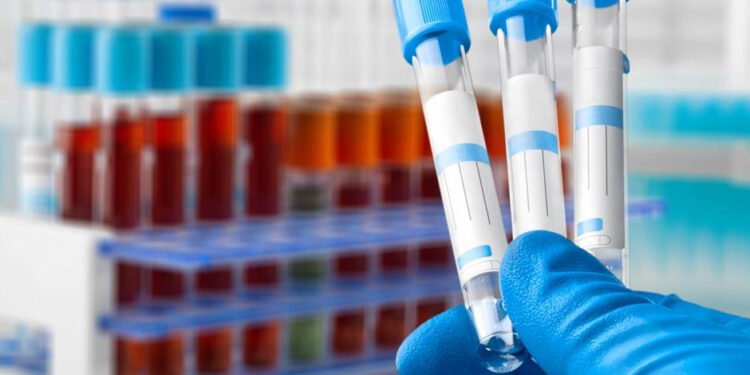Lab labels are vital tools for ensuring safety, accuracy, and efficiency in scientific and research laboratories. They provide essential identification for samples, chemicals, equipment, and data, making workflows smoother and minimizing the potential for error. In modern lab environments, where complexity and precision are paramount, labeling plays an increasingly critical role. This article explores the benefits, types, and best practices for effective labeling in laboratories.
Enhancing Safety Through Labeling
Safety is a top priority in laboratories, especially where hazardous chemicals and sensitive samples are involved. Labels serve as the first line of defense, conveying essential information about contents, hazards, handling procedures, and expiration dates. Clearly labeled containers and samples help lab personnel avoid mishandling substances and adhere to proper safety protocols. By minimizing risks and guiding safe practices, labeling fosters a safer work environment and reduces the likelihood of accidents.
Increasing Efficiency with Organized Workflows
Lab labels also streamline lab workflows, ensuring that samples, containers, and equipment are quickly identifiable. This organization saves time otherwise spent searching for or verifying contents. Proper labeling reduces the risk of cross-contamination and helps keep experiments running smoothly. In labs where efficiency is crucial, labeling promotes a structured environment where staff can access everything they need without unnecessary interruptions.
Supporting Data Accuracy and Regulatory Compliance
In regulated industries, such as pharmaceuticals, biotechnology, and chemical manufacturing, accurate labeling is indispensable. Regulatory bodies often require detailed information on samples and equipment to maintain safety and accountability. Labels aid in meeting these compliance standards by ensuring that all necessary information is accessible and verifiable. Furthermore, labeling facilitates data accuracy, allowing for precise tracking and maintaining consistency in research and development.
Types of Lab Labels
Laboratories use various types of labels tailored to specific needs. Each type serves unique purposes, from identifying samples to ensuring durability in extreme conditions.
Sample labels are the most common, used for identifying different samples with details like sample ID, date, experiment number, and storage requirements. Many labs now use barcoded sample labels to streamline sample tracking and facilitate quick data retrieval, often integrated with lab management software. This connection between labeling and lab management software is crucial because integrating such systems can further enhance laboratory efficiency by automating routine tasks like sample tracking, reducing manual data entry, and minimizing errors. This could not only optimize workflow management but also ensure faster turnaround times for test results and improve overall productivity.
Chemical labels are crucial for substances requiring specific handling and storage. These labels often comply with standards such as OSHA (Occupational Safety and Health Administration) and GHS (Globally Harmonized System of Classification and Labeling of Chemicals). Including hazard symbols, signal words, and precautionary statements on these labels is vital for safe handling.
Laboratory equipment also requires clear identification. Equipment labels mark devices like microscopes, centrifuges, and pipettes, often including asset IDs, calibration dates, or maintenance schedules. This labeling ensures that equipment is functional and well-maintained, reducing the risk of misuse and improving adherence to maintenance routines.
Cryogenic and freezer labels are specially designed to withstand ultra-low temperatures, ideal for biobanks and genetic labs where samples are stored in freezers or liquid nitrogen. These labels ensure samples remain identifiable even in extreme conditions, a necessity in environments where accuracy is paramount.
Autoclave labels are used for items that undergo sterilization. These labels must endure high-temperature steam cleaning, maintaining readability through repeated cycles. Microbiology and research labs, where sterilized equipment is essential, rely on these durable labels.
Best Practices for Effective Lab Labeling
To maximize the safety and functionality of labels, adopting best practices for labeling in laboratories is essential. One of the primary considerations is the use of durable, high-quality labels. Choosing the right material based on lab conditions—such as waterproof or smudge-proof labels—ensures longevity. Labels that peel, fade, or smudge can lead to misidentification, compromising both safety and efficiency.
Another crucial practice is including all necessary information. A well-prepared label has essential details, such as the item’s identity, concentration, date, and any required safety warnings. For chemicals, hazard pictograms and GHS-compliant information are indispensable. A comprehensive yet concise label minimizes confusion and maximizes safety.
Using barcoded labels is a smart way to improve efficiency and reduce errors. Barcoding enables quick sample identification and integrates seamlessly with digital laboratory information management systems (LIMS). High-volume labs, in particular, benefit from barcoded labels, as they provide reliable and efficient sample tracking.
Compliance with labeling standards is another critical factor. Labs should follow regulatory requirements, such as OSHA or GHS standards, to ensure labels meet legal and safety standards. This practice is particularly important in pharmaceutical, clinical, and chemical labs where compliance is monitored closely.
Regularly reviewing and updating labels ensures that all information is accurate and legible. Implementing a routine to check label condition is vital, especially for items with expiration dates. This practice helps preserve sample integrity and reinforces lab safety.
Lastly, organizing labels by lab sections can further improve accessibility and efficiency. Larger labs with multiple sections can benefit from assigning specific colors or label formats to each area, helping personnel quickly identify samples or equipment. This organization minimizes search time, prevents cross-contamination, and promotes a structured workflow.
Selecting the Right Labeling Solution
Choosing the right labeling solution requires considering a lab’s specific environment and requirements. Temperature stability, adhesive strength, and print clarity are all important factors. For instance, cryogenic labels are essential for ultra-low temperatures, while autoclave labels are designed to withstand sterilization. Investing in a high-quality label printer can also simplify the labeling process, ensuring that labels are clear, durable, and compliant with regulatory standards.
Conclusion: The Crucial Role of Lab Labels
Lab labels are more than organizational tools; they are central to safety, compliance, and efficiency in laboratory settings. By carefully selecting the appropriate labels and following best practices, laboratories can create an environment where samples, chemicals, and equipment are easy to identify and safely handled. With clear labeling systems in place, labs not only reduce risks but also promote smoother workflows and maintain high standards of accuracy. As lab demands grow more complex, effective labeling remains a cornerstone of laboratory success.












